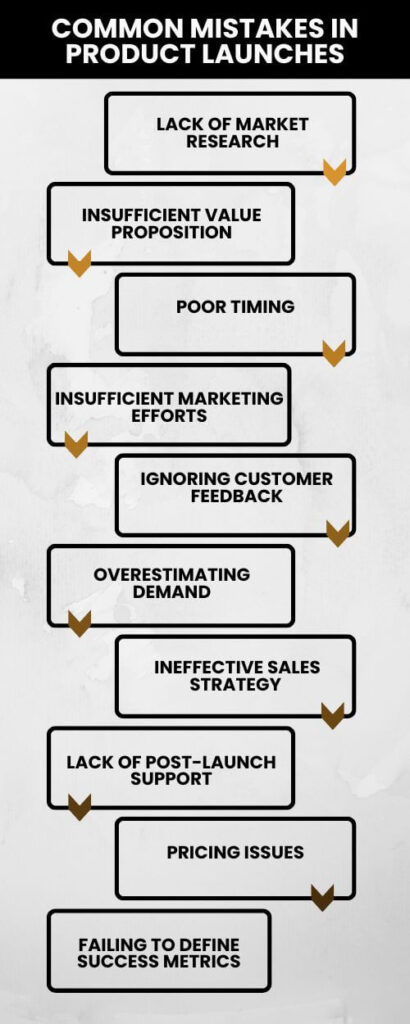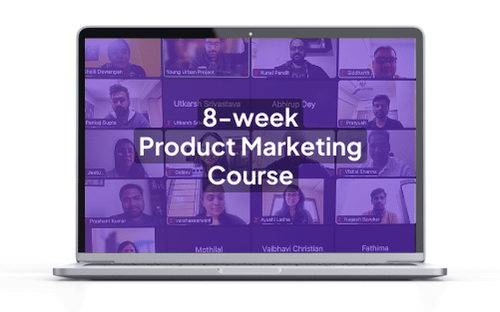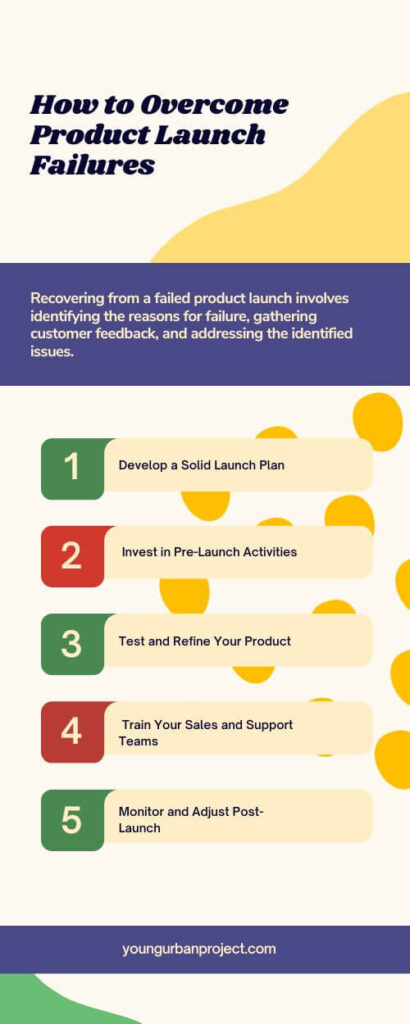Launching a product is an exciting but challenging endeavor. Despite meticulous planning and significant investment, many product launches fail to achieve their intended success. Product launches can falter due to several critical mistakes that undermine their success.
Insufficient market research often leads to a misalignment between the product and consumer expectations, resulting in poor reception and low sales. Timing is also crucial; launching too early or late can miss the optimal market window, diminishing the product’s impact. Ineffective marketing strategies further compound these issues, limiting visibility and failing to engage target audiences effectively.
Moreover, overlooking product quality can lead to negative reviews and customer dissatisfaction, tarnishing the brand’s reputation.
Lastly, neglecting to integrate customer feedback during development can result in a product that fails to resonate with its intended users, leading to underwhelming sales and market penetration. Recognizing and addressing these common pitfalls is essential for companies aiming to achieve successful product launches and sustain long-term growth in competitive markets. This blog explores the common mistakes made during product launches and provides actionable strategies to avoid them.
Common Mistakes in Product Launches

1. Lack of Market Research
Mistake:
One of the most significant reasons product launches fail is due to insufficient market research. Companies often skip this critical step, resulting in a lack of understanding of their target audience’s needs, preferences, and pain points. Without this knowledge, the product may not resonate with potential customers, leading to poor adoption rates and eventual failure.
Solution:
Conduct comprehensive market research before launching a product. This includes obtaining information on competition offerings, market trends, and client preferences. Use surveys, focus groups, and interviews to collect valuable insights. Analyze this data to identify gaps in the market and understand what customers truly want. By aligning your product with market demands, you increase the likelihood of a successful launch.

Practical Steps:
- Customer Surveys: Create detailed surveys to gather direct feedback from potential customers about their needs and expectations.
- Focus Groups: Organize sessions with diverse groups to discuss their preferences and pain points regarding similar products.
- Competitor Analysis: Study competitors’ products and strategies to identify what works and what doesn’t in the market.
- Trend Analysis: Keep up with industry trends to ensure your product stays relevant and meets emerging customer needs.
2. Insufficient Value Proposition
Mistake:
A common reason for product launch failure is an insufficient or unclear value proposition. If potential customers cannot quickly understand why a product is unique and how it benefits them, they are unlikely to be interested in purchasing it. This lack of clarity can stem from poorly communicated product benefits or features that do not address the core needs of the target audience.
Solution:
Develop a strong value proposition that clearly articulates the unique benefits of your product and how it solves specific problems for your target audience. This involves identifying the key features that set your product apart from competitors and emphasizing these points in your marketing messages.
Practical Steps:
- Identify Unique Selling Points (USPs): Determine what makes your product stand out in the market.
- Customer-Centric Messaging: Focus on how your product solves customer problems or improves their lives.
- Clear Communication: Use simple, concise language to convey the value proposition.
- Consistent Branding: Ensure that all marketing materials consistently highlight the value proposition.
3. Poor Timing
Mistake:
Another frequent reason product launches fail is poor timing. Launching a product during an inopportune moment, such as a market downturn, during a major competitor’s release, or at a time when your target audience is not focused on purchasing, can significantly impact the success of your product.
Solution:
To optimize your product launch timing, conduct a market analysis to identify the best periods for your target audience. Consider factors such as seasonality, industry events, and competitor activities. Plan your launch to coincide with times when your audience is most receptive and when market conditions are favorable.
Practical Steps:
- Seasonal Trends: Analyze sales data to identify high-demand periods for your product.
- Competitor Activity: Monitor competitors to avoid clashing with their major launches.
- Market Conditions: Evaluate the economic and market environment to ensure it’s conducive to a successful launch.
- Customer Readiness: Ensure your target audience is prepared and eager for your product by building anticipation through pre-launch marketing.
4. Insufficient Marketing Efforts
Mistake:
Many product launches fail because they are not supported by robust marketing efforts. Without adequate promotion, even the most innovative products can go unnoticed. Relying on minimal marketing strategies often leads to low visibility and poor sales.
Solution:
Develop a comprehensive marketing plan that spans multiple channels to maximize reach and engagement. This should include digital marketing, social media campaigns, email marketing, content marketing, and PR efforts to generate buzz and awareness before, during, and after the launch.
Practical Steps:
- Multi-Channel Strategy: Utilize various marketing platforms like social media, email, blogs, and influencers to reach a wider audience.
- Pre-Launch Campaigns: Build anticipation with teaser campaigns, countdowns, and early access offers.
- Consistent Messaging: Ensure all marketing materials convey a consistent and compelling message.
- Engage Influencers: Partner with industry influencers to expand reach and credibility.
Learn Product Marketing from top experts from companies like:
Google, Swiggy, Squadcast, Navi and more.

5. Ignoring Customer Feedback
Mistake:
Failing to incorporate customer feedback during product development can lead to a product that doesn’t meet customer expectations.
Solution:
Actively seek and integrate customer feedback throughout the product development process. Use beta testing, pilot programs, and user reviews to make necessary adjustments before the official launch.
6. Overestimating Demand
Mistake:
Overestimating the demand for a product can result in overproduction and financial losses.
Solution:
Conduct demand forecasting using data-driven approaches and realistic assumptions. Start with a limited release to gauge market response before scaling up production.
7. Ineffective Sales Strategy
Mistake:
A weak sales strategy can hinder a product’s ability to penetrate the market and gain traction.
Solution:
Develop a comprehensive sales strategy that includes training for sales teams, clear sales targets, and effective sales channels. Leverage partnerships and distribution networks to expand reach.
8. Lack of Post-Launch Support
Mistake:
Neglecting post-launch support can lead to customer dissatisfaction and negative reviews, which can damage the product’s reputation.
Solution:
Provide robust post-launch support, including customer service, troubleshooting guides, and regular updates. Engage with customers to address their concerns and gather feedback for future improvements.
9. Pricing Issues
Mistake:
Incorrect pricing, whether too high or too low, can deter customers and affect the product’s success.
Solution:
Conduct a thorough pricing analysis considering production costs, competitor pricing, and perceived value. Implement pricing strategies such as tiered pricing or introductory offers to attract different customer segments.
10. Failing to Define Success Metrics
Mistake:
Without clear success metrics, it’s challenging to measure the effectiveness of the product launch and make data-driven decisions.
Solution:
Define specific, measurable, achievable, relevant, and time-bound (SMART) goals for the product launch. Track key performance indicators (KPIs) such as sales, market share, customer acquisition, and customer satisfaction to assess success and identify areas for improvement.
How to Overcome Product Launch Failures

1. Develop a Solid Launch Plan
A detailed launch plan is essential for coordinating all aspects of a product launch. This plan should outline timelines, responsibilities, and key performance indicators (KPIs) to measure success.
Actionable Tip: Create a project management timeline that includes all tasks, milestones, and deadlines. Assign responsibilities to team members and regularly review progress to ensure the launch stays on track.
2. Invest in Pre-Launch Activities
Pre-launch activities can generate excitement and anticipation for your product. These activities can include teaser campaigns, pre-order options, and influencer partnerships.
Actionable Tip: Build a pre-launch campaign that leverages social media, email marketing, and influencer endorsements. Offer exclusive previews or discounts to early adopters to create buzz and drive early interest.
3. Test and Refine Your Product
Thorough testing and refinement are crucial to ensure your product meets quality standards and customer expectations.

Actionable Tip: Conduct extensive beta testing and gather feedback from real users. Use this feedback to make improvements and address any issues before the official launch.
4. Train Your Sales and Support Teams
Your sales and support teams are the front line of your product launch. Ensuring they are well-trained and knowledgeable about the product is essential for providing excellent customer service and addressing any concerns.
Actionable Tip: Provide comprehensive training sessions for your sales and support teams. Equip them with detailed product information, FAQs, and troubleshooting guides to handle customer inquiries effectively.
5. Monitor and Adjust Post-Launch
The work doesn’t stop after the product launch. Monitoring performance and making necessary adjustments based on real-time data is crucial for long-term success.
Actionable Tip: Set up analytics to track key metrics such as sales, customer feedback, and website traffic. Use this data to identify areas for improvement and make data-driven decisions to enhance your product marketing strategies.
Conclusion
Launching a product successfully requires a strategic approach that encompasses thorough market research, effective timing, robust marketing strategies, and a commitment to product quality. At Young Urban Project, we understand the complexities involved in product marketing and strive to equip our students with the knowledge and skills needed to excel in this dynamic field.
Our Product Marketing Course stands out as a comprehensive program designed to hone your expertise in market research, positioning, messaging, and consumer psychology. Led by industry experts, our course offers live interactive sessions, practical assignments, and invaluable insights into the latest trends and best practices.
Whether you’re looking to advance your career in product marketing or enhance your business’s product launch strategies, our course provides the essential tools and knowledge to succeed. Join Young Urban Project today and embark on a transformative journey towards becoming a proficient product marketer in today’s competitive landscape.
For more information and to enroll in our Product Marketing Course, visit our website and take the first step towards achieving your professional goals.

